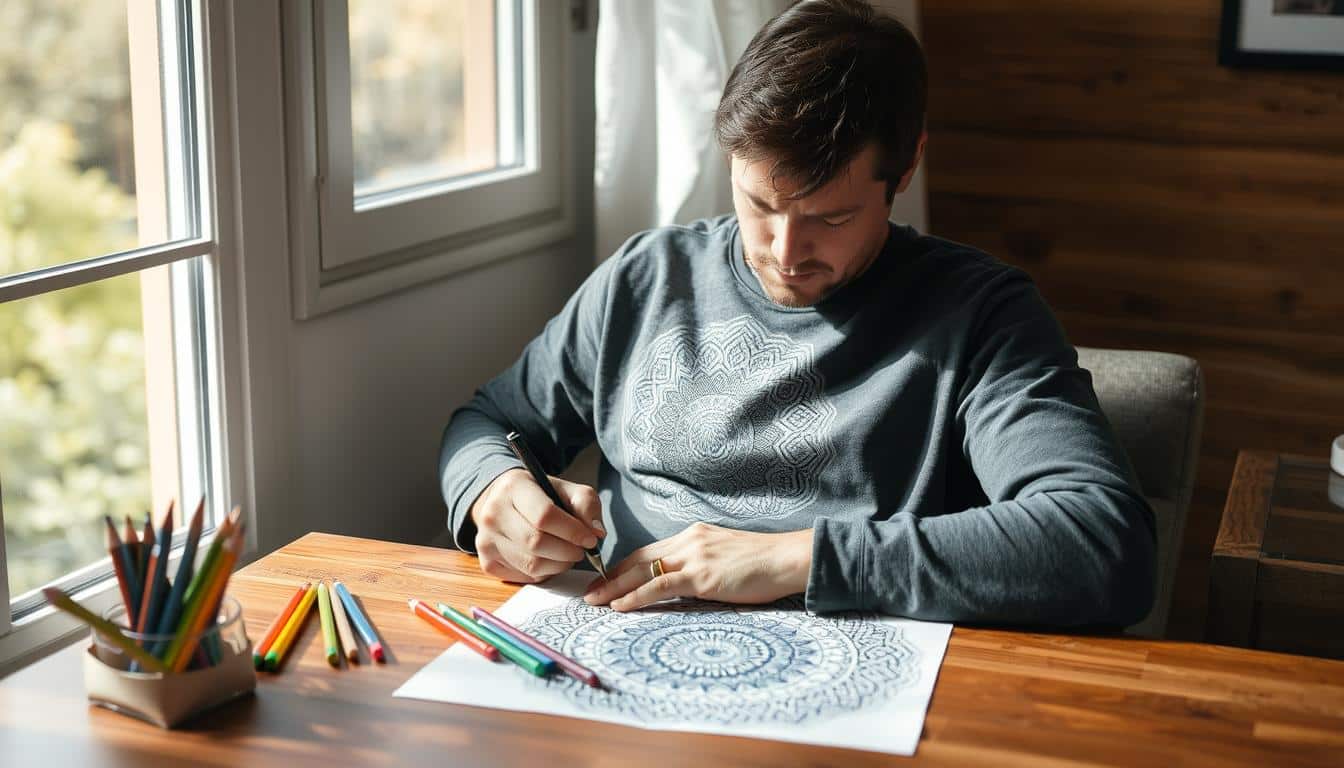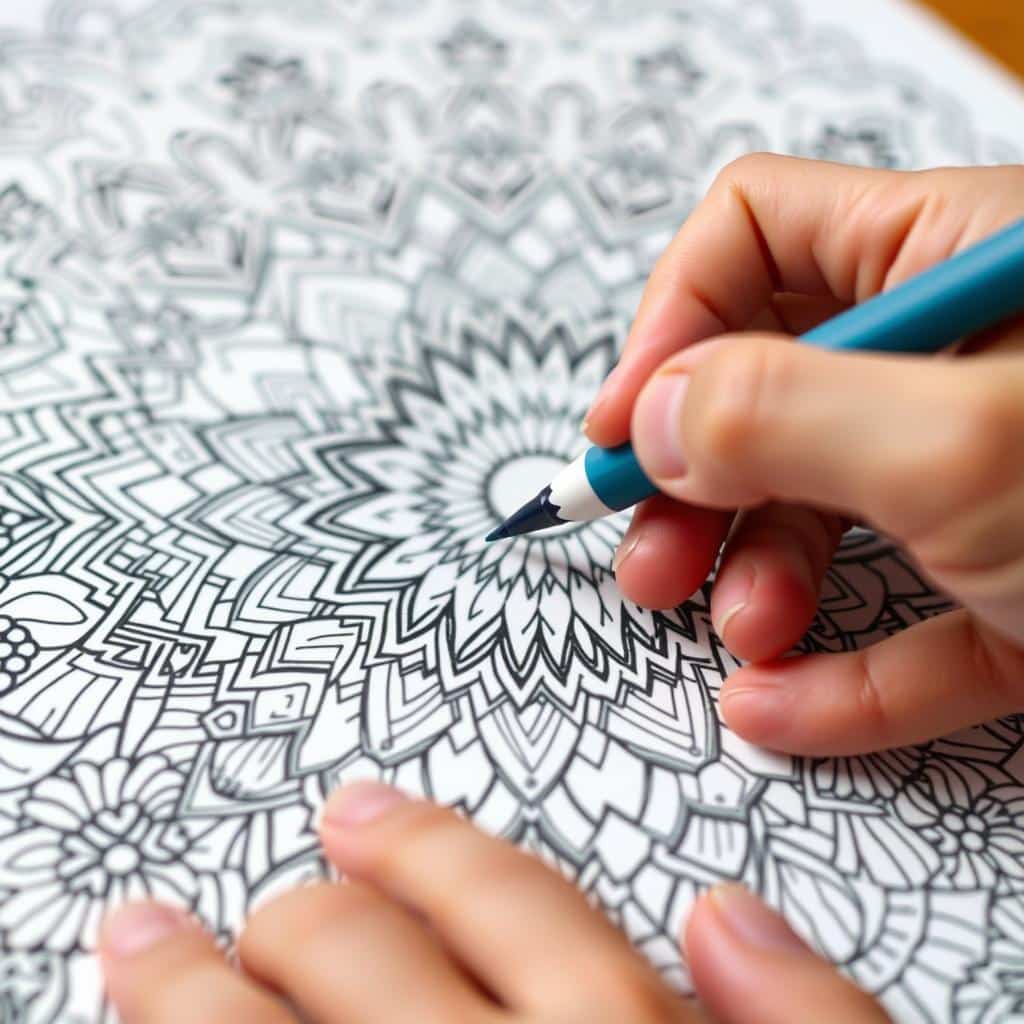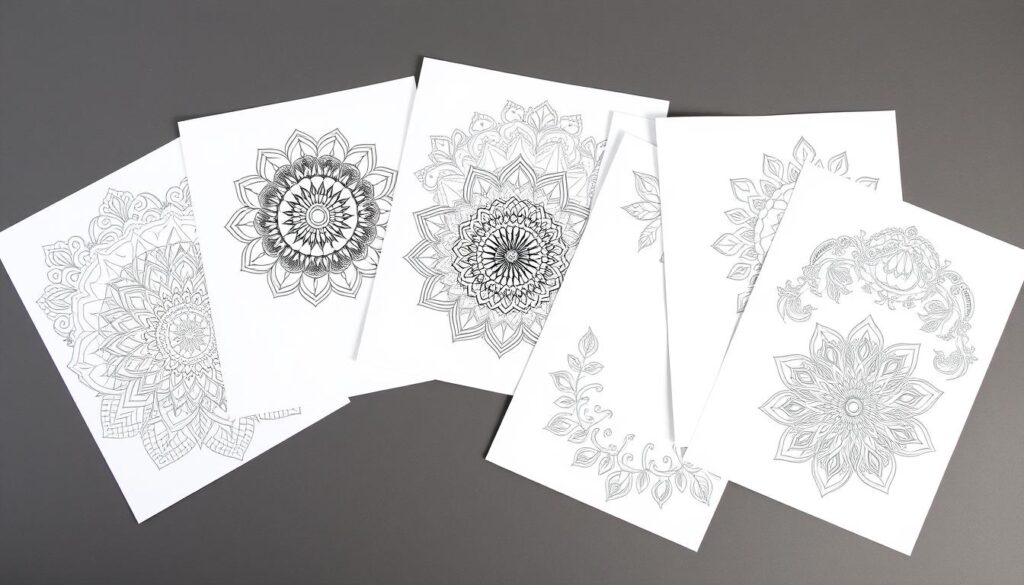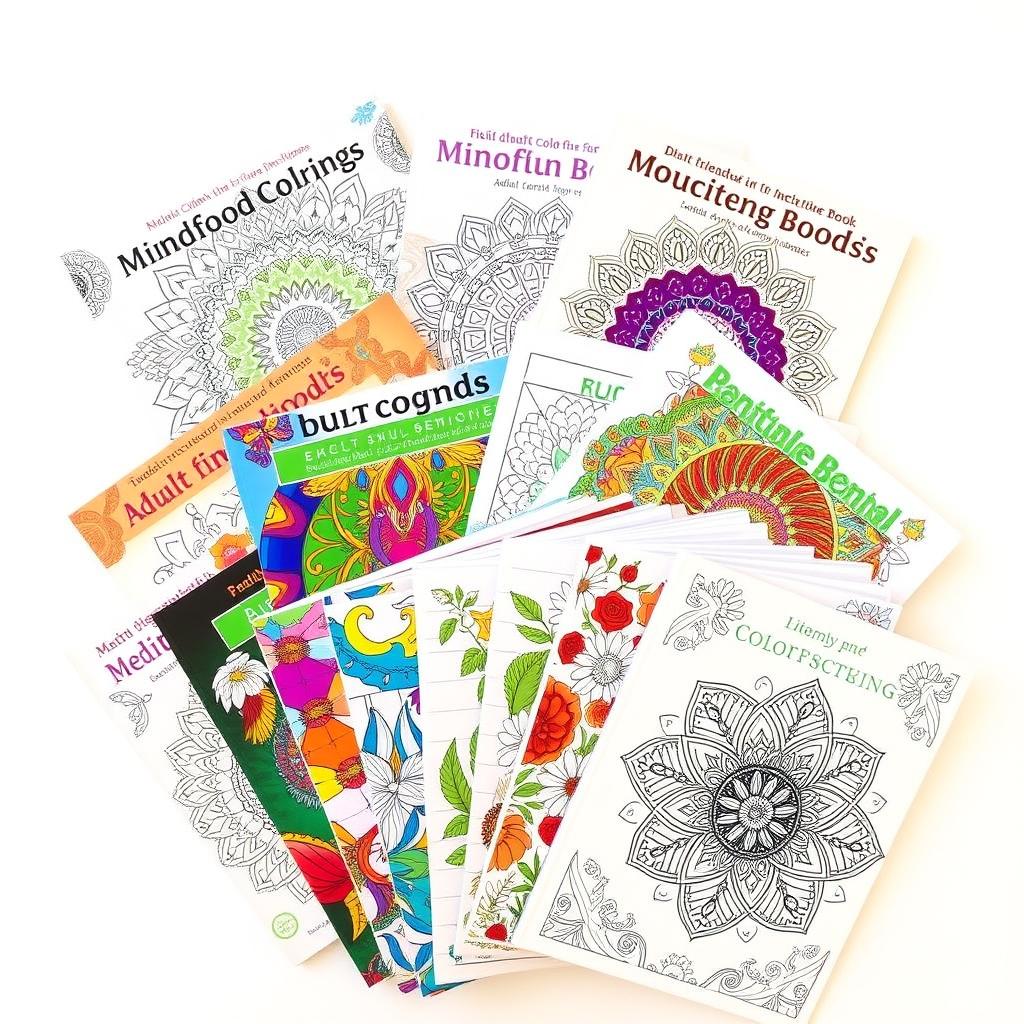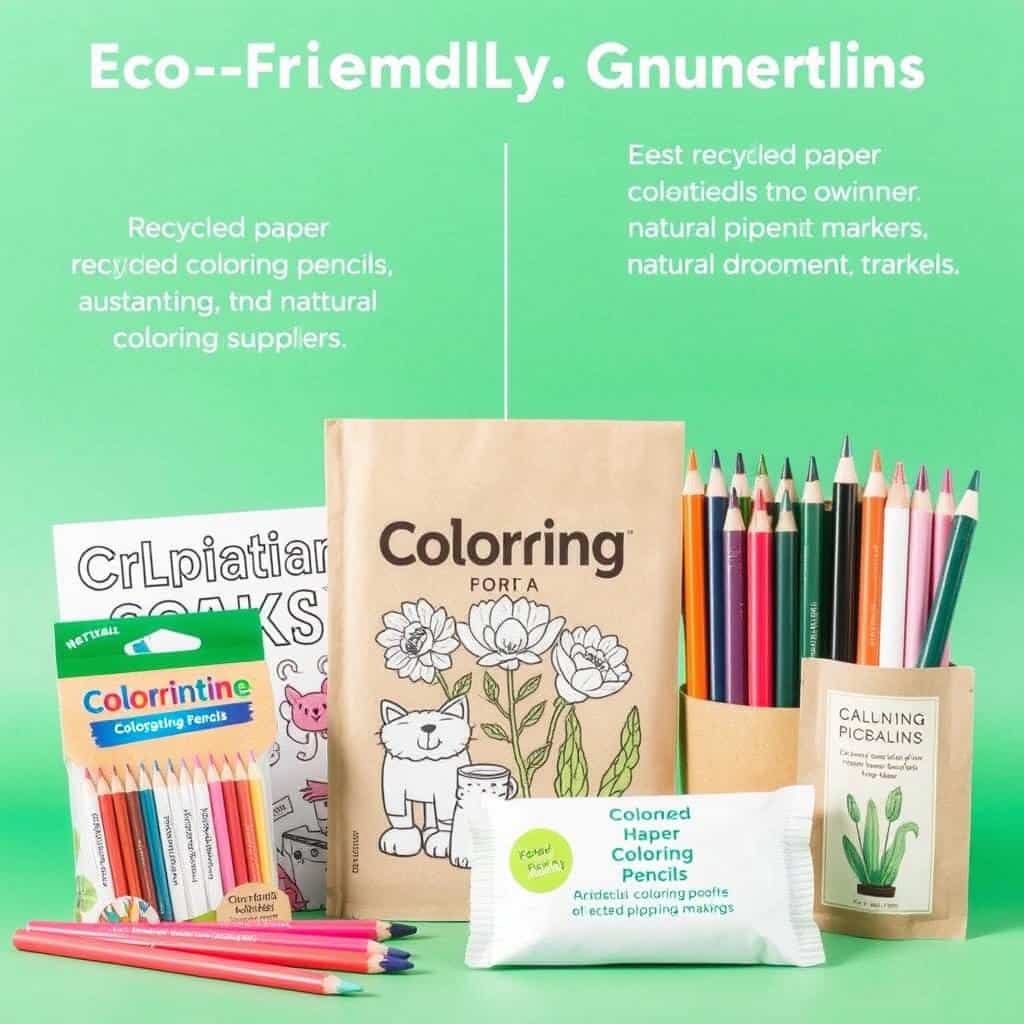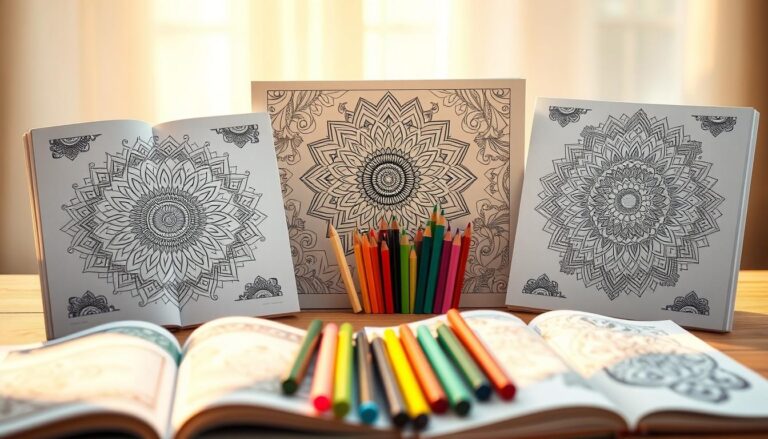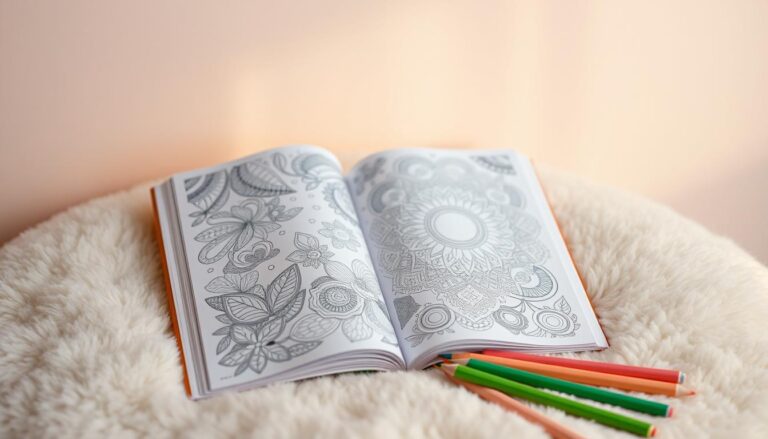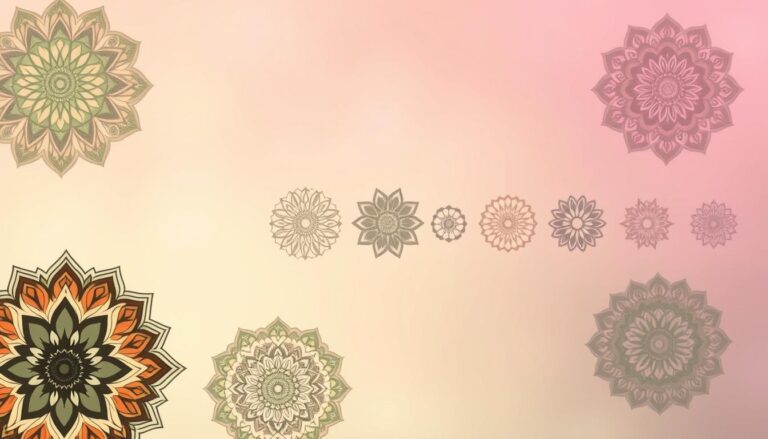Coloring Meditation: A Mindful Journey to Inner Peace
Understanding Coloring Meditation
Coloring meditation is exactly what it sounds like—a meditative practice that uses coloring as its focal point. Unlike traditional meditation where you might focus on your breath or a mantra, coloring meditation channels your attention into the rhythmic, repetitive motions of coloring intricate patterns.
This practice works because it engages both hemispheres of the brain simultaneously. The logical left brain helps with structure and pattern recognition, while the creative right brain engages with color selection and artistic expression. This balanced brain activity naturally induces a state similar to meditation.
The beauty of coloring meditation lies in its simplicity. You don’t need special skills, expensive equipment, or years of practice. The structured nature of coloring pages—particularly mandalas and geometric patterns—provides a framework that makes meditation accessible even to those who find traditional meditation challenging.
As Dr. Scott M. Bea from the Cleveland Clinic explains, “Adult coloring requires modest attention focused outside of self-awareness. It’s a simple activity that takes us outside ourselves in the same way cutting the lawn, knitting, or taking a Sunday drive can all be relaxing.”

The Therapeutic Benefits of Coloring Meditation
The growing popularity of coloring meditation isn’t just a trend—it’s backed by emerging research on its psychological and physiological benefits. When we engage in focused coloring, our bodies respond in measurable ways:
Stress Reduction
Researchers from Hobart and William Smith Colleges found that coloring for just 20 minutes can significantly reduce anxiety levels and induce a state similar to meditation. The repetitive motions activate the parasympathetic nervous system, lowering heart rate and blood pressure.
Improved Focus
Coloring requires sustained attention, which strengthens our ability to focus. Studies suggest this improved concentration extends beyond the coloring session, helping with other tasks requiring mental clarity. The structured nature of coloring pages provides just enough guidance to keep the mind engaged.
Emotional Processing
Color choices often reflect our emotional state, making coloring a form of emotional expression. The Creative Research Journal suggests that coloring can lower symptoms of depression by providing a safe outlet for processing complex feelings without the pressure of creating art from scratch.
“When thoughts are focused on this simple activity, your brain tends to relax. You’re not disturbed by your own thoughts and appraisals. The difficulties of life evaporate from your awareness, and both your body and your brain may find this rewarding.”
Begin Your Coloring Meditation Journey Today
Download our free starter pack with 5 printable meditation-focused coloring pages, including mandalas, geometric patterns, and nature-inspired designs. Plus, receive a beginner’s guide to coloring meditation techniques.
Coloring Meditation vs. Traditional Meditation
| Aspect | Traditional Meditation | Coloring Meditation |
| Focus Point | Breath, mantra, or visualization | Physical activity of coloring patterns |
| Learning Curve | Can be challenging for beginners | Immediately accessible to most people |
| Physical Component | Usually stationary | Involves fine motor skills and movement |
| Thought Wandering | Often requires practice to manage | Naturally minimized by the activity |
| Tangible Result | No physical product | Creates a completed artwork |
Both practices lead to similar mental states, but coloring meditation offers a more structured approach that many find easier to maintain. The key similarity is the cultivation of present-moment awareness—the foundation of all mindfulness practices.
How to Practice Coloring Meditation: A Step-by-Step Guide

Preparation
- Choose a quiet, comfortable space with good lighting
- Select a coloring page that appeals to you (mandalas work particularly well)
- Gather quality coloring tools—pencils, markers, or crayons
- Set aside 15-30 minutes of uninterrupted time
- Turn off notifications and other distractions
The Practice
- Begin with three deep breaths to center yourself
- Observe the pattern before you, noticing its structure and details
- Select your first color intuitively—what color are you drawn to?
- Start coloring with deliberate, mindful strokes
- When your mind wanders (and it will), gently bring your focus back to the colors and patterns
- Notice physical sensations—the feel of the pencil, the sound of coloring, the visual transformation
- Continue until you feel complete, whether that means finishing the page or simply ending your session
Mindfulness Tip: There is no “right way” to color. Release perfectionism and enjoy the process rather than focusing solely on the end result. If you make a “mistake,” see it as an opportunity to practice acceptance—a core mindfulness skill.
Recommended Tools for Coloring Meditation
Coloring Books
- Mandala collections for spiritual focus
- Geometric patterns for mathematical precision
- Nature-inspired designs for organic flow
- Look for books with single-sided pages to prevent bleed-through
Coloring Tools
- Colored pencils for subtle blending and control
- Fine-tip markers for precise details
- Gel pens for smooth application and vibrant colors
- Watercolor pencils for unique effects
Sustainable Options
- Recycled paper coloring books
- Plantable pencils that grow herbs when used up
- Natural pigment markers without toxic additives
- Soy-based crayons as an eco-friendly alternative
Different Patterns and Their Meditative Effects



The pattern you choose can significantly impact your meditation experience. Beginners might start with simpler designs, while those seeking deeper focus might prefer more intricate patterns that require sustained attention.
The Science Behind Coloring Meditation
Research on coloring meditation continues to grow, with several studies highlighting its effectiveness for mental health:
A 2005 study published in Art Therapy found that coloring mandalas significantly reduced anxiety levels in adults, outperforming both free-form coloring and simple doodling.
Research from 2017 in the Creativity Research Journal demonstrated that just 20 minutes of coloring could induce a meditative state comparable to traditional mindfulness practices.
A 2018 study with university students showed that regular coloring sessions before exams reduced test anxiety and improved performance compared to control groups.
Neuroimaging studies suggest that the bilateral brain engagement during coloring activates both analytical and creative neural pathways, creating a balanced state conducive to mindfulness.
While research specifically on coloring meditation is still emerging, these findings align with the well-established benefits of both art therapy and mindfulness practices, suggesting that their combination in coloring meditation offers unique advantages.
Real Experiences with Coloring Meditation
“After struggling with traditional meditation for years, coloring meditation was a revelation. I can actually stay present for 30 minutes without my mind constantly wandering. It’s become my daily mental health practice.”
“As someone with anxiety, sitting still with my thoughts in traditional meditation was actually making things worse. Coloring gives my hands something to do while my mind gradually settles. I’ve reduced my anxiety medication since starting this practice.”
“I started coloring meditation for myself, but it’s become a family activity. My teenagers actually put down their phones to join me! It’s created this peaceful space in our home where we can all be present together.”
Tips for Beginners and Daily Integration
Getting Started
- Start with just 5-10 minutes and gradually increase your time
- Choose simpler patterns initially to build confidence
- Experiment with different coloring tools to find what feels best
- Try coloring at different times of day to discover when you’re most receptive
- Remember there’s no “right way” to color—this is your personal practice
Making It a Habit
- Keep coloring supplies visible and accessible in your home
- Schedule coloring meditation in your calendar like any important appointment
- Create a dedicated coloring space that feels inviting
- Join online communities for motivation and inspiration
- Track your mood before and after sessions to notice benefits
Overcoming Common Challenges
Challenges
- “I don’t have time” – Even 5 minutes of coloring meditation can be beneficial
- “I’m not artistic” – No artistic skill required; this is about process, not product
- “My mind still wanders” – This is normal; gently return focus to coloring
- “I worry about doing it wrong” – There is no wrong way to practice
- “I get frustrated with imperfections” – These become opportunities to practice acceptance
Solutions
- Keep a “coloring station” ready to use when you have a few minutes
- Use pre-drawn patterns that only require adding color
- Use mind-wandering as a mindfulness bell to practice returning attention
- Focus on how the activity feels rather than how it looks
- Embrace “mistakes” as part of the practice and learning process
Ready to Experience the Calm of Coloring Meditation?
Join thousands who have discovered this accessible path to mindfulness. Download our free starter pack with beautiful coloring pages and a step-by-step guide to begin your practice today.
Embracing the Mindful Art of Coloring
Coloring meditation offers a unique bridge between artistic expression and mindfulness practice. In a world where traditional meditation can seem intimidating or inaccessible, this approach provides a tangible, enjoyable path to the same mental health benefits.
Whether you’re seeking stress relief, improved focus, emotional processing, or simply a moment of peace in your busy day, coloring meditation offers a practice that’s as effective as it is enjoyable. The beauty of this approach lies in its simplicity and accessibility—all you need is a coloring page, some colors, and the willingness to be present with the experience.
As you embark on your coloring meditation journey, remember that like any mindfulness practice, the benefits deepen with regular engagement. The colorful mandalas and patterns you create are not just beautiful images—they’re tangible reminders of your commitment to mental wellbeing and present-moment awareness.

